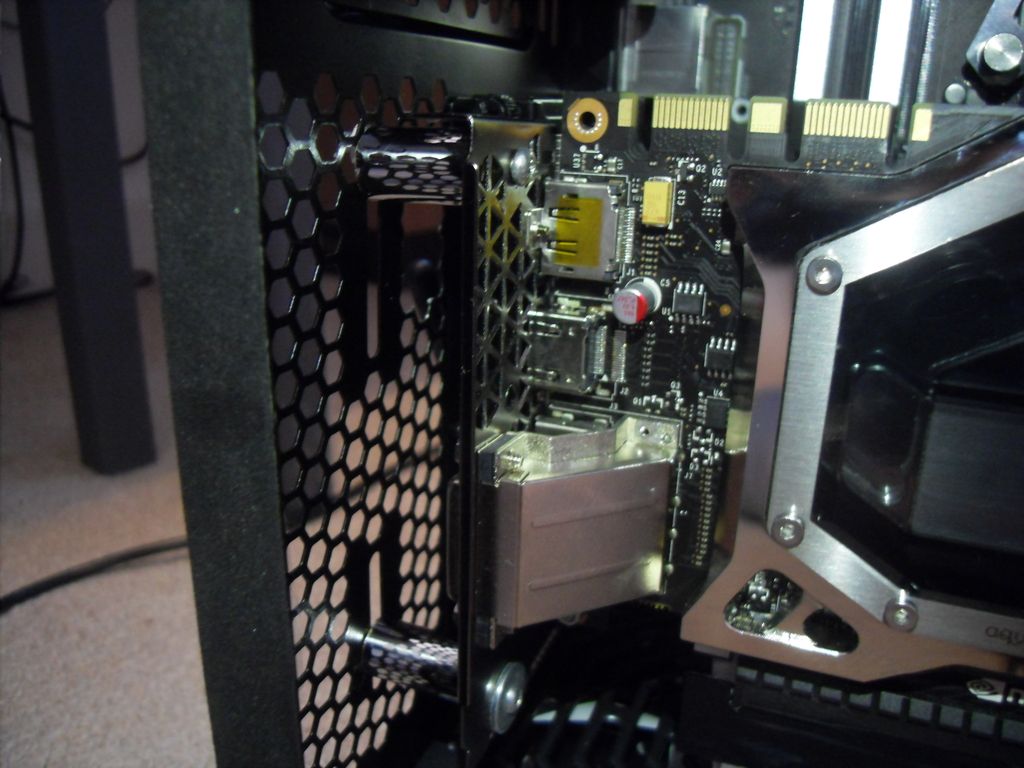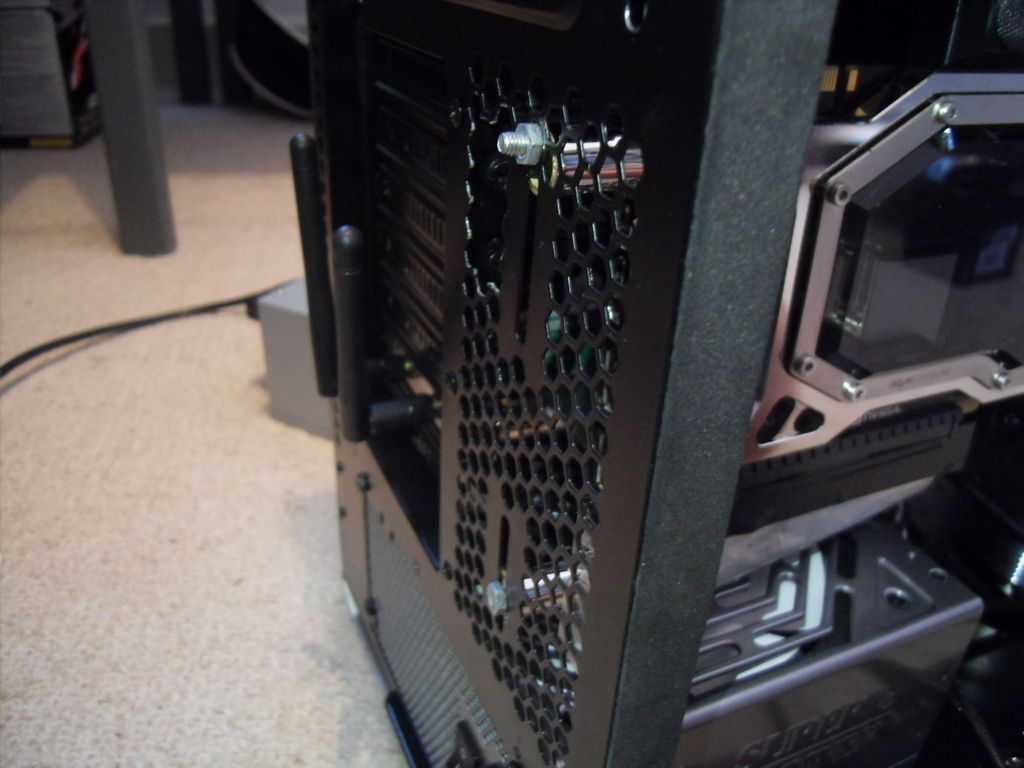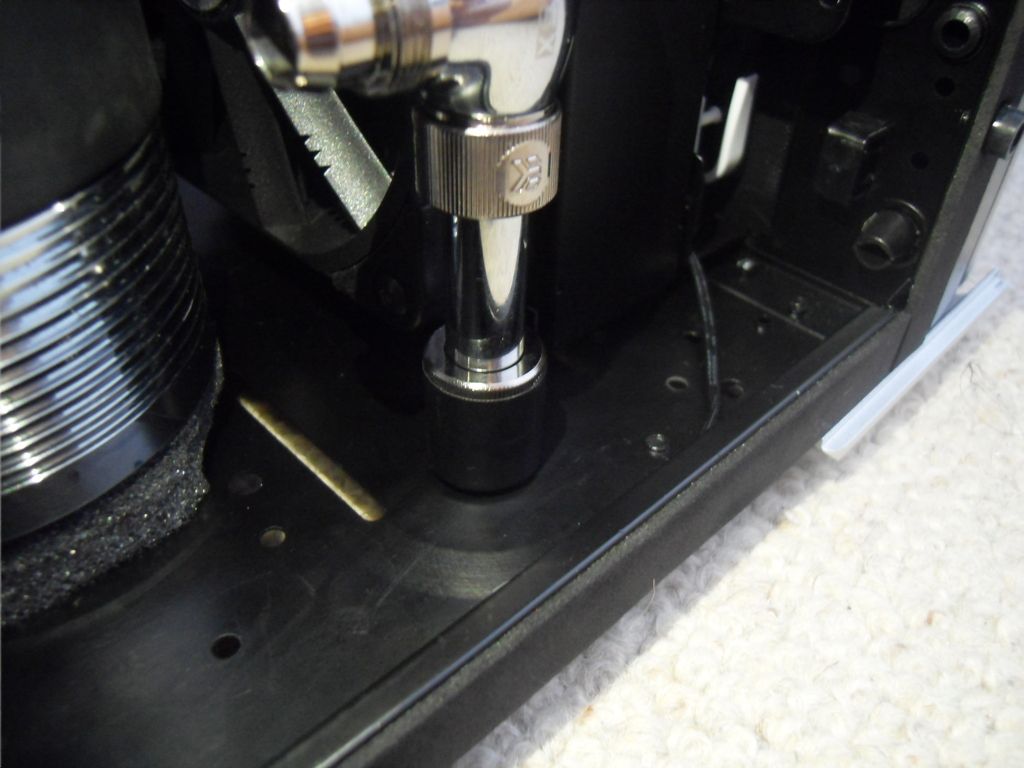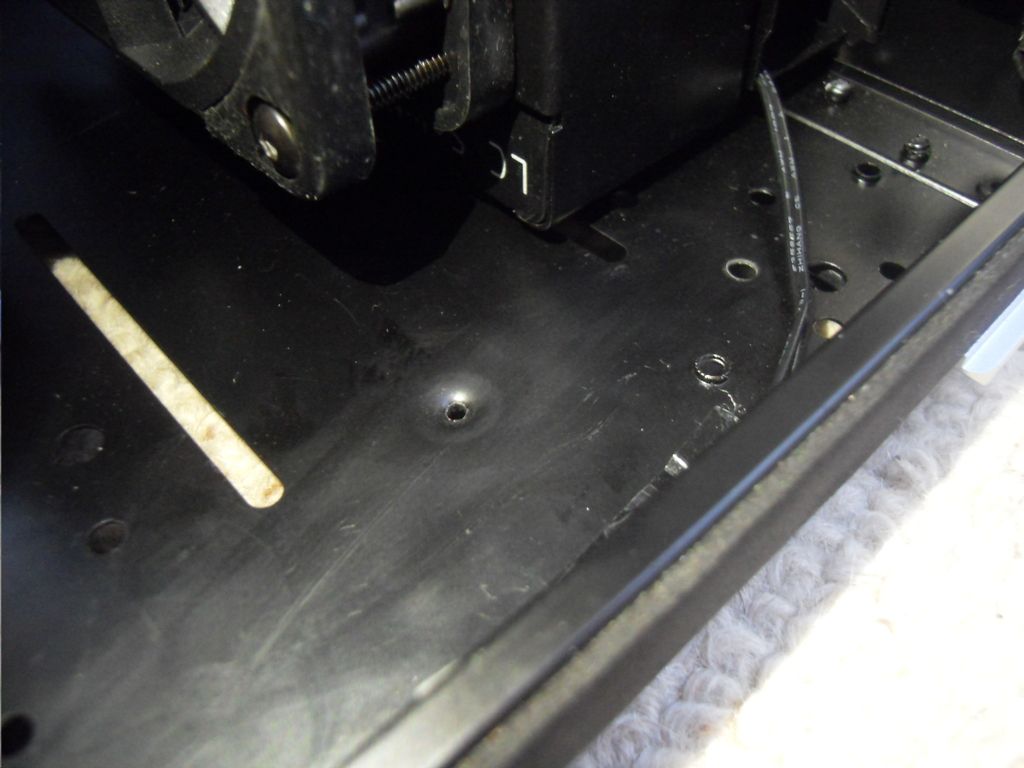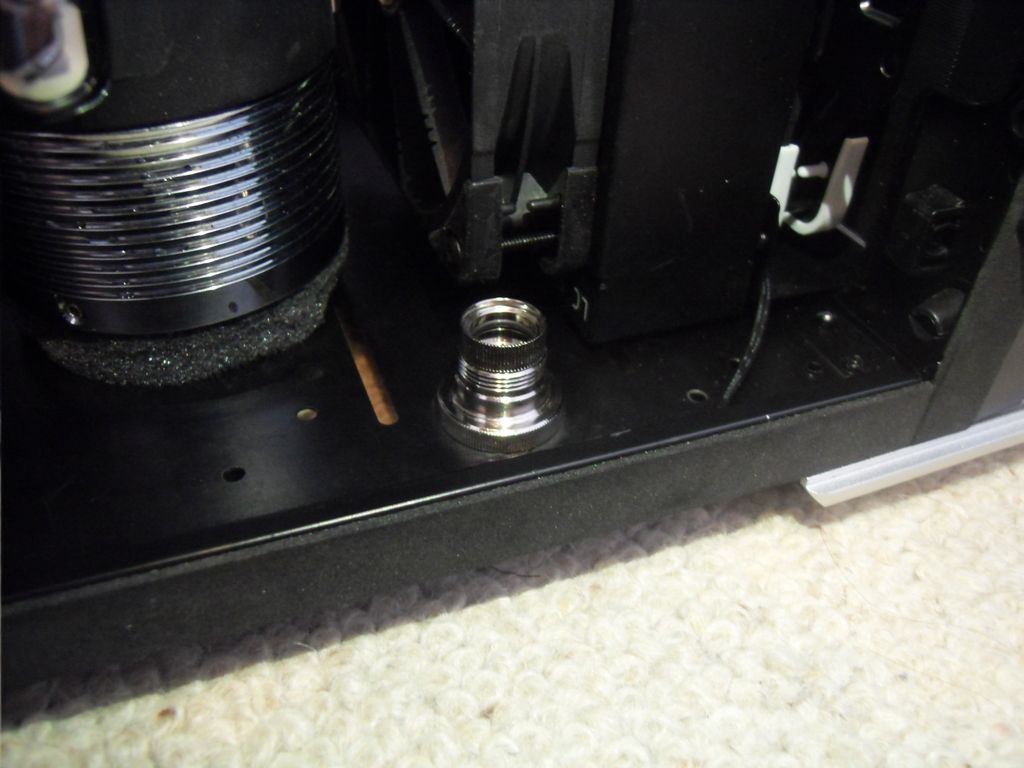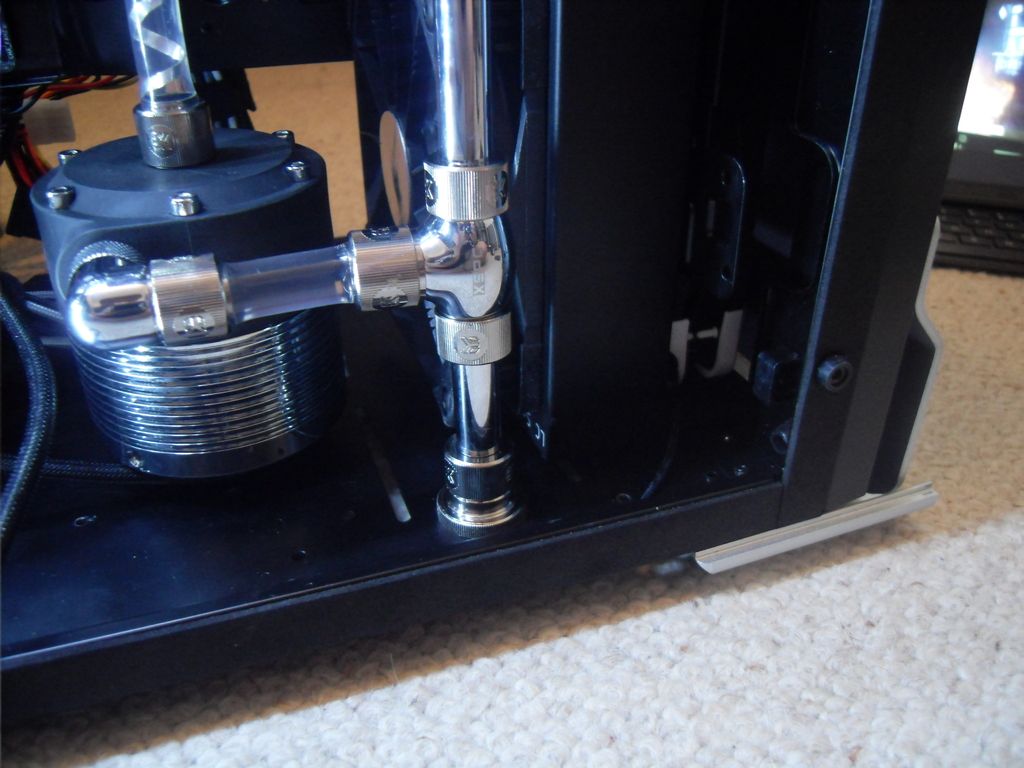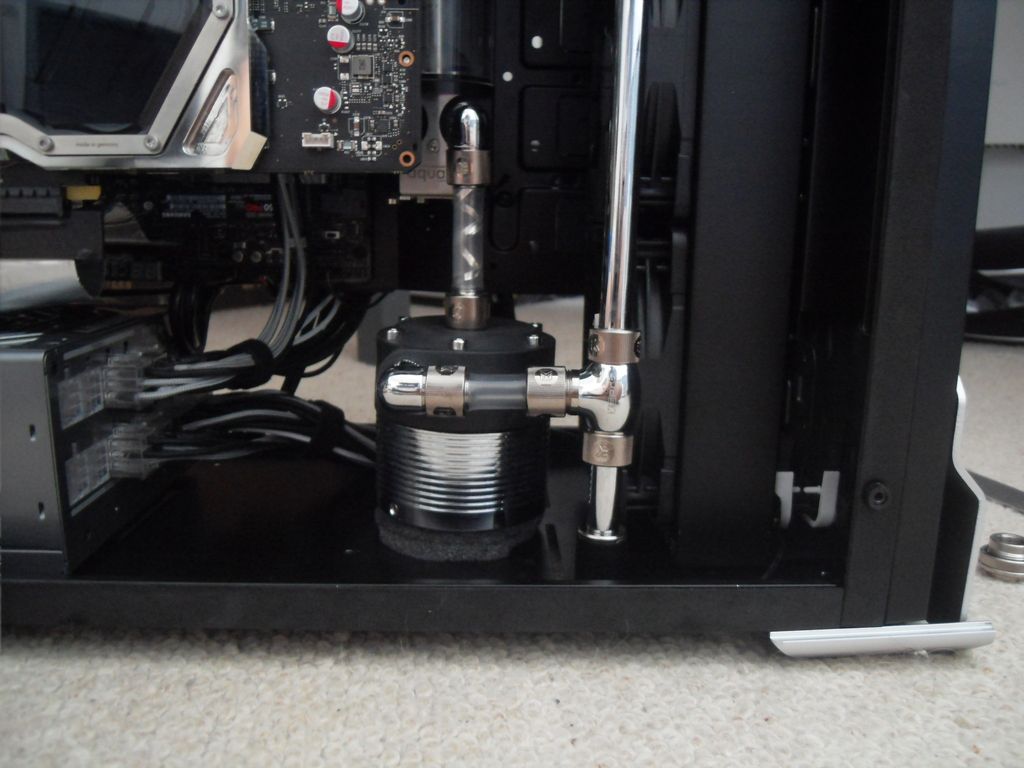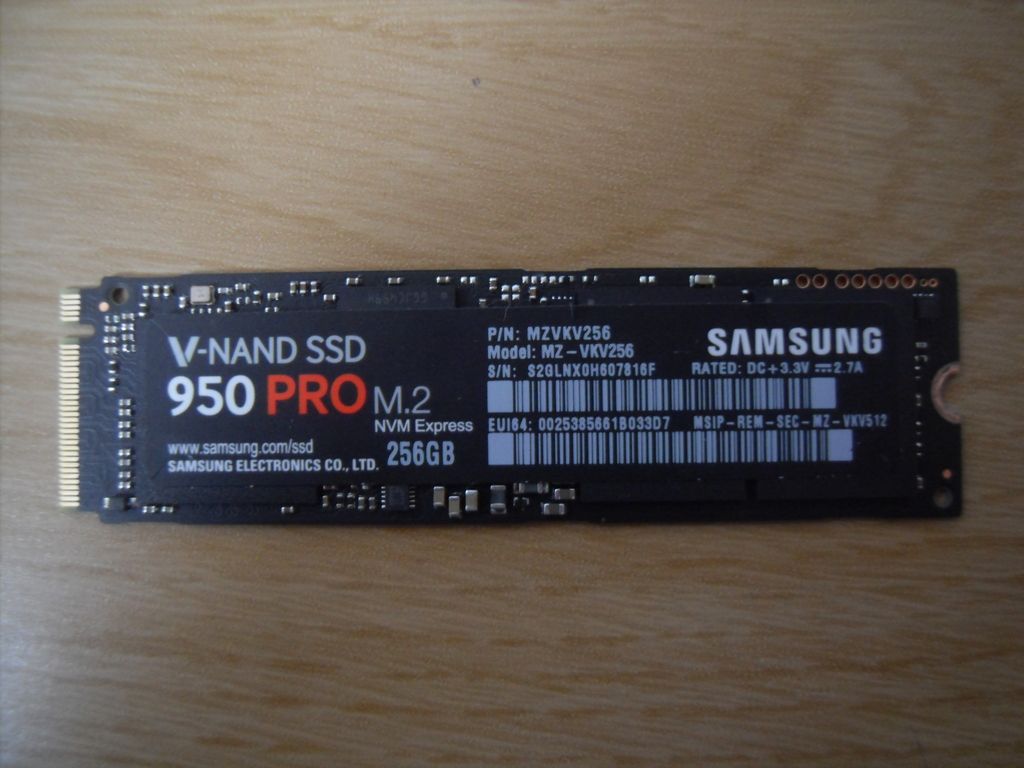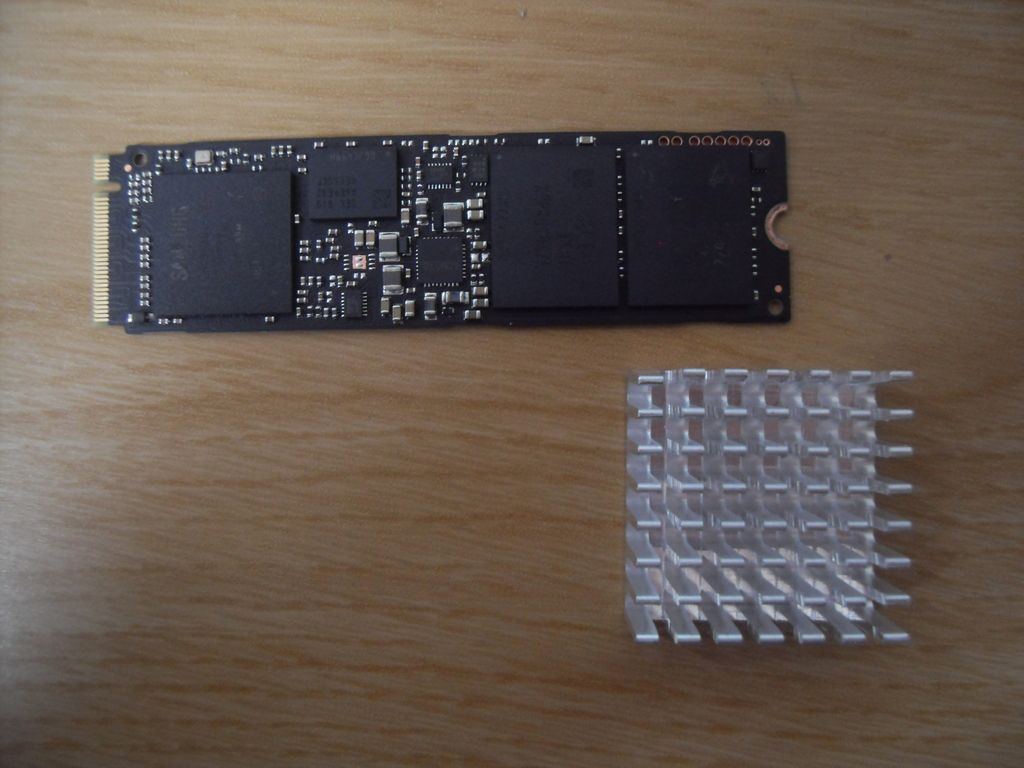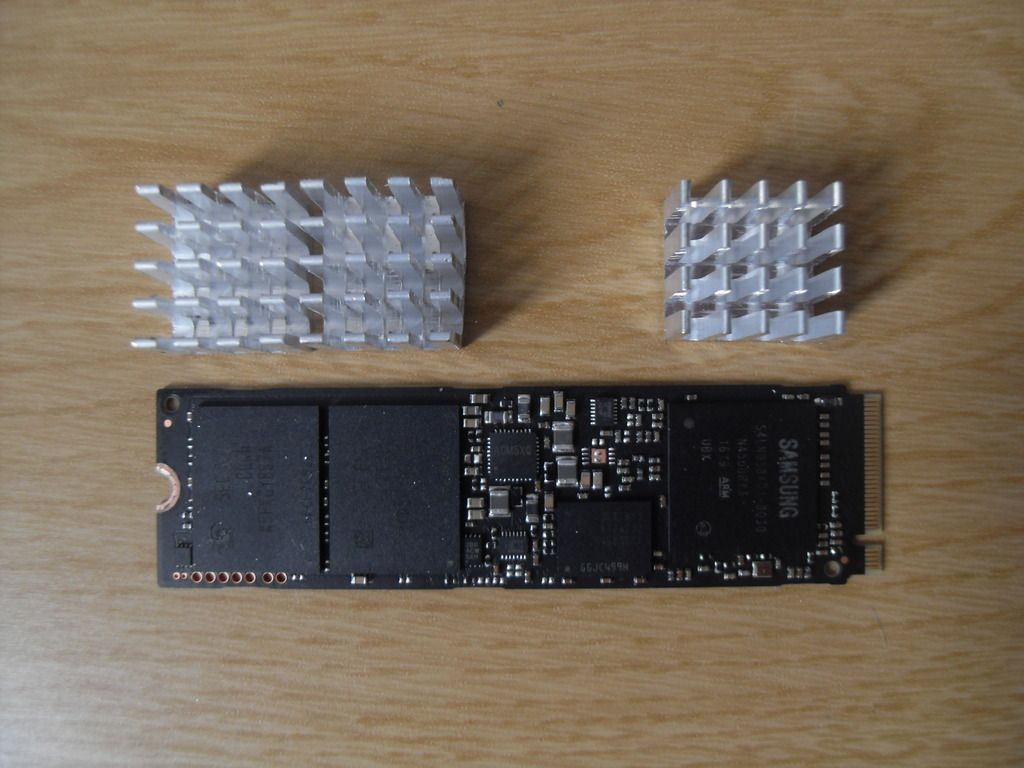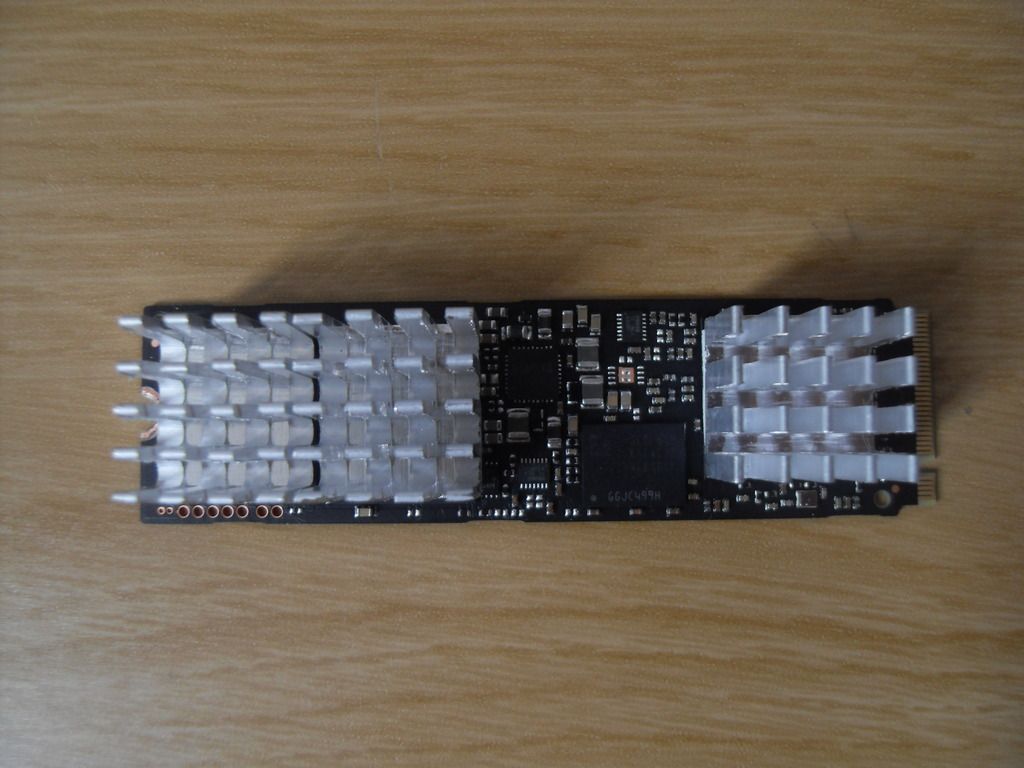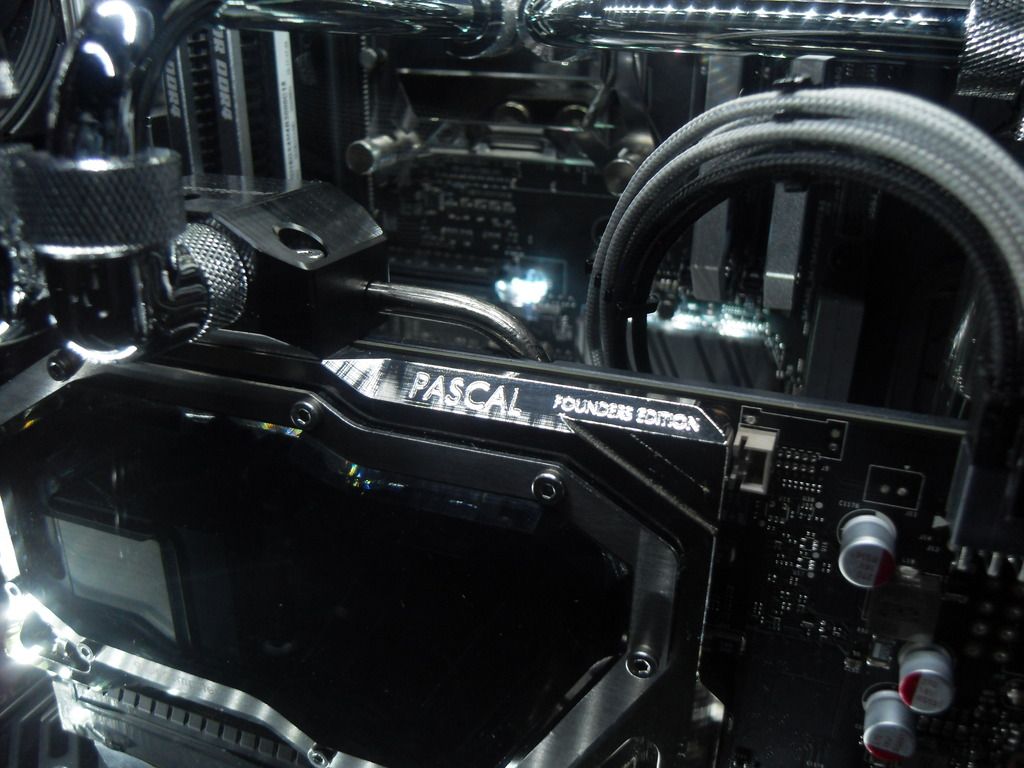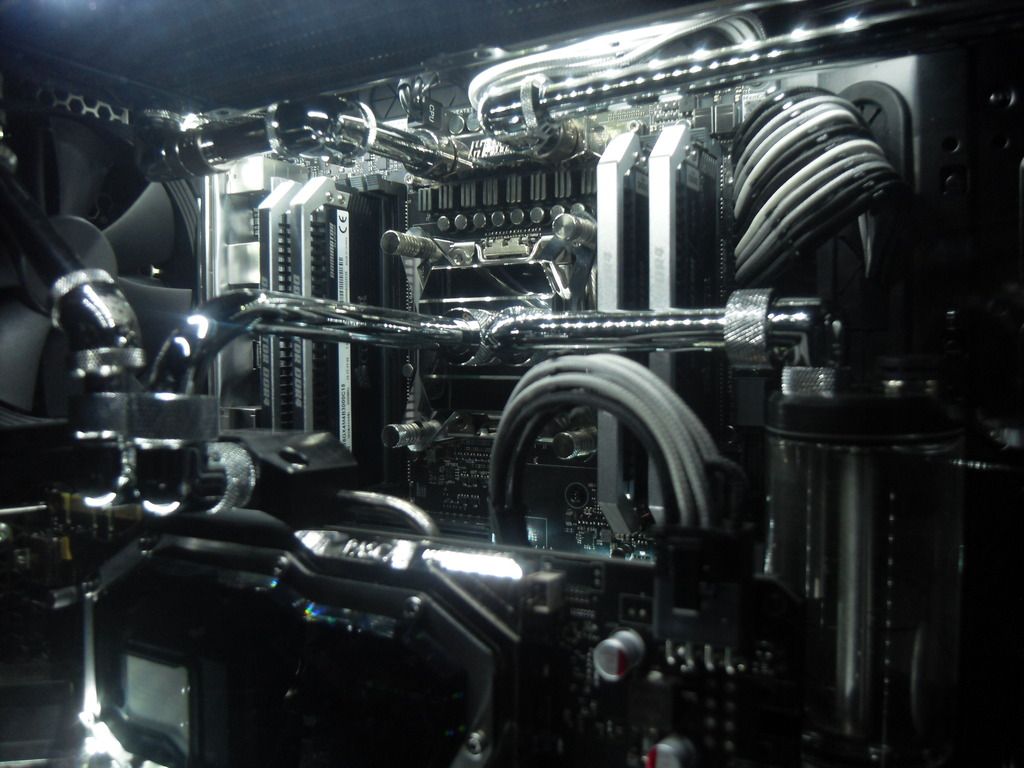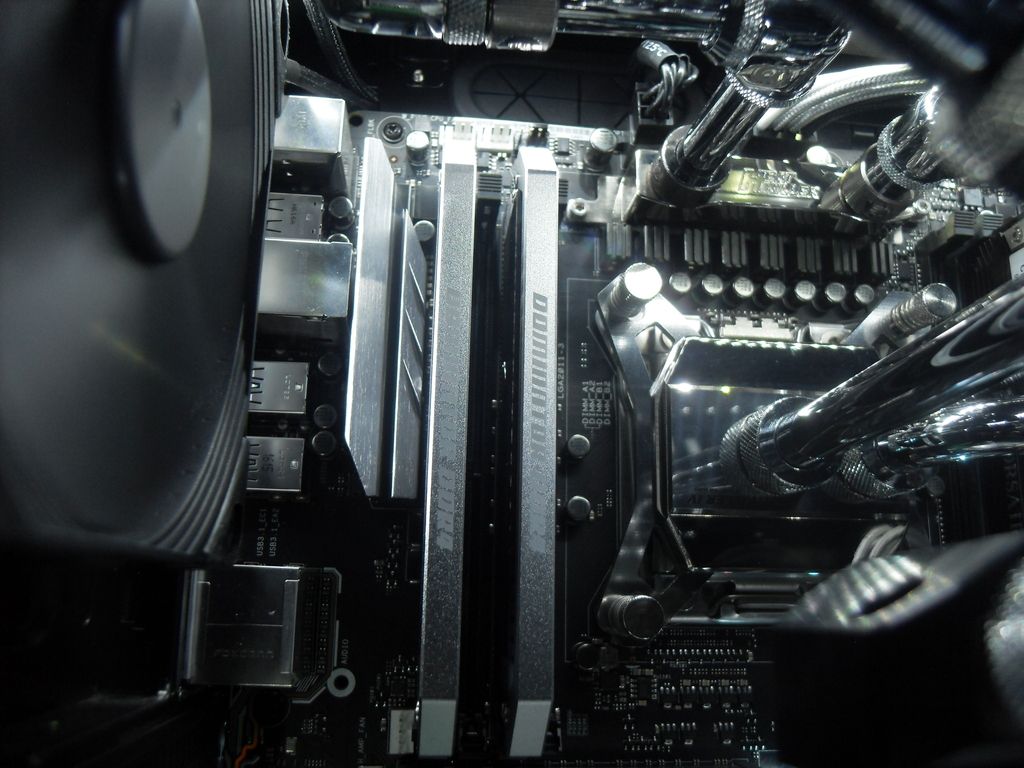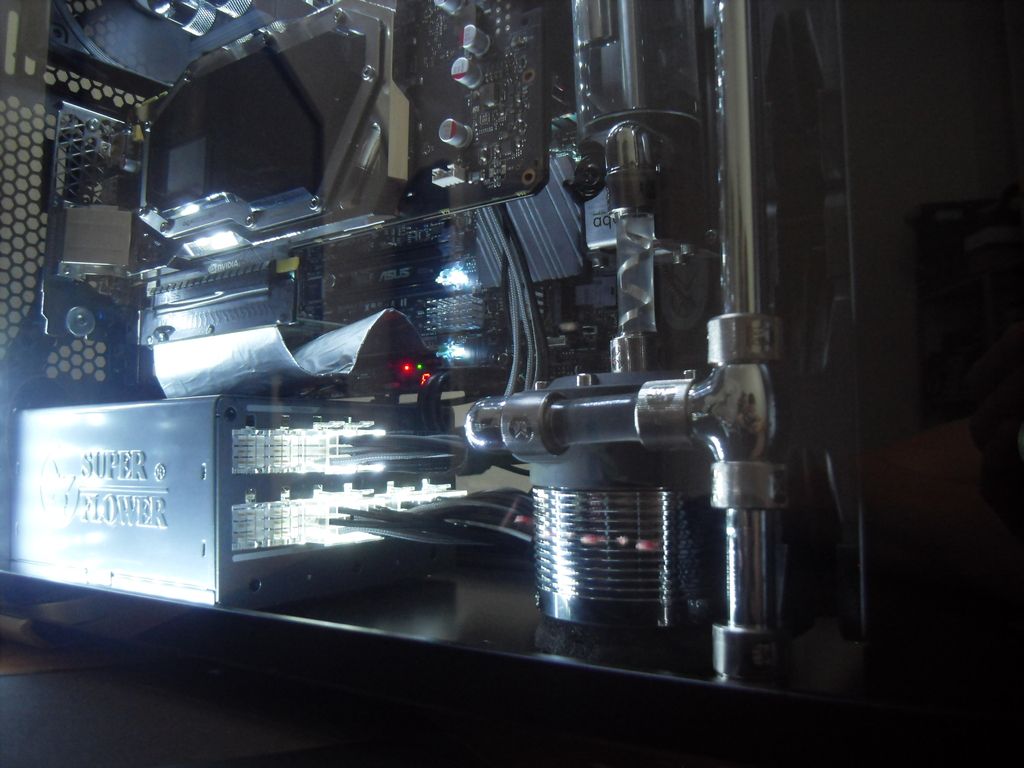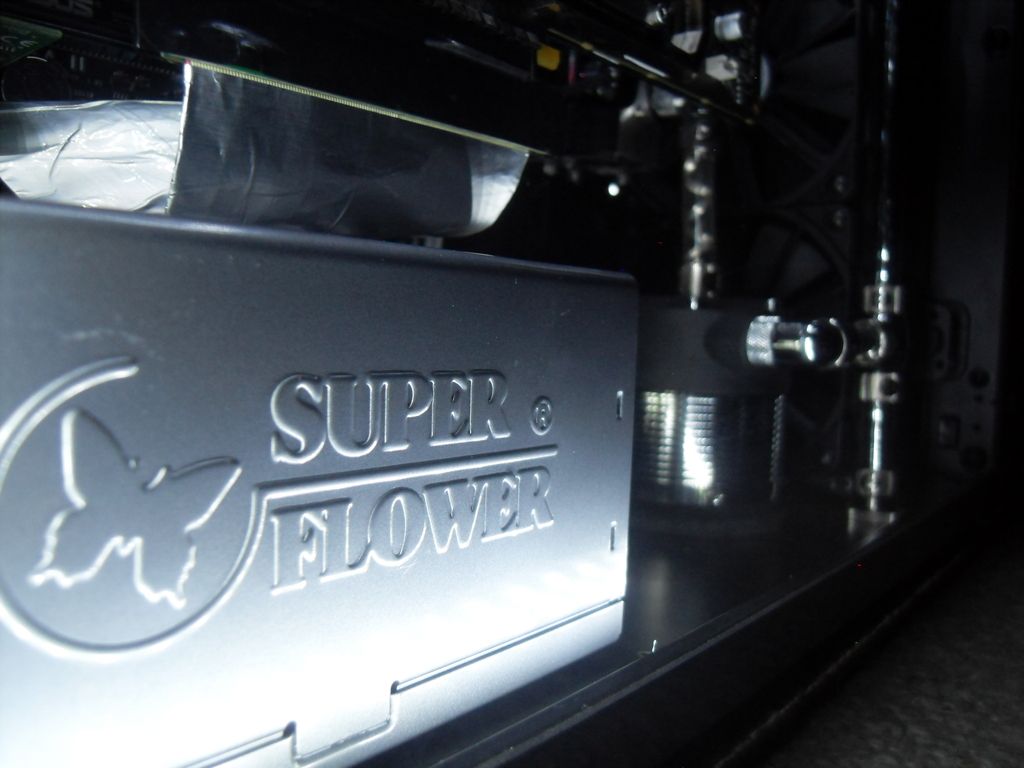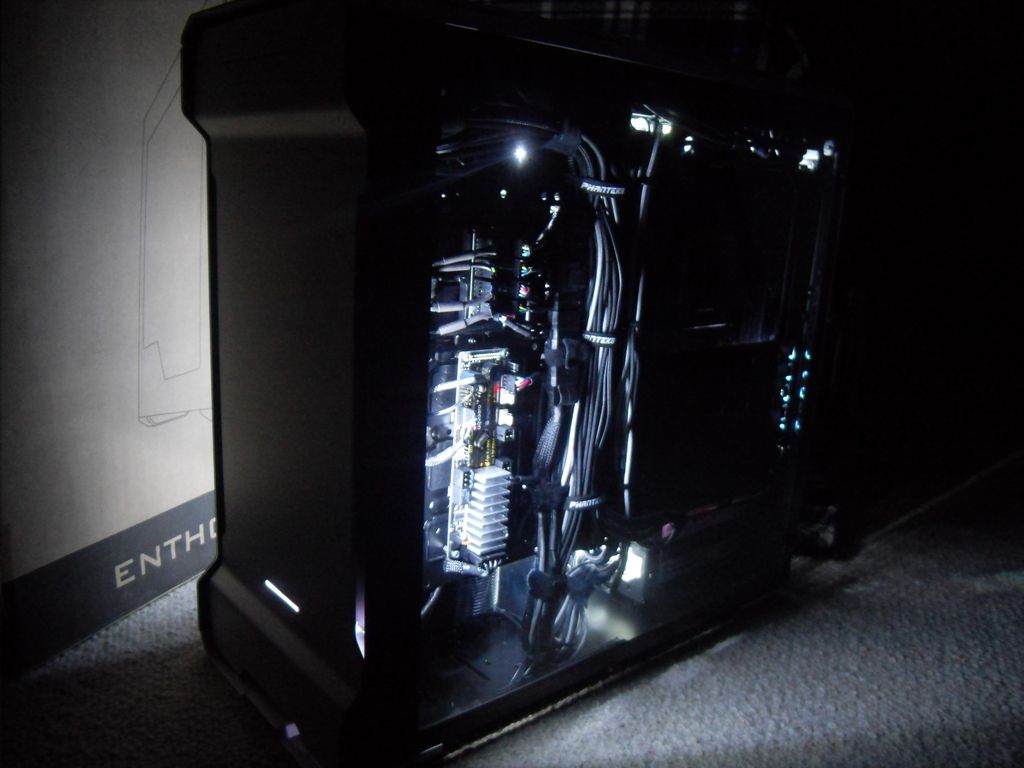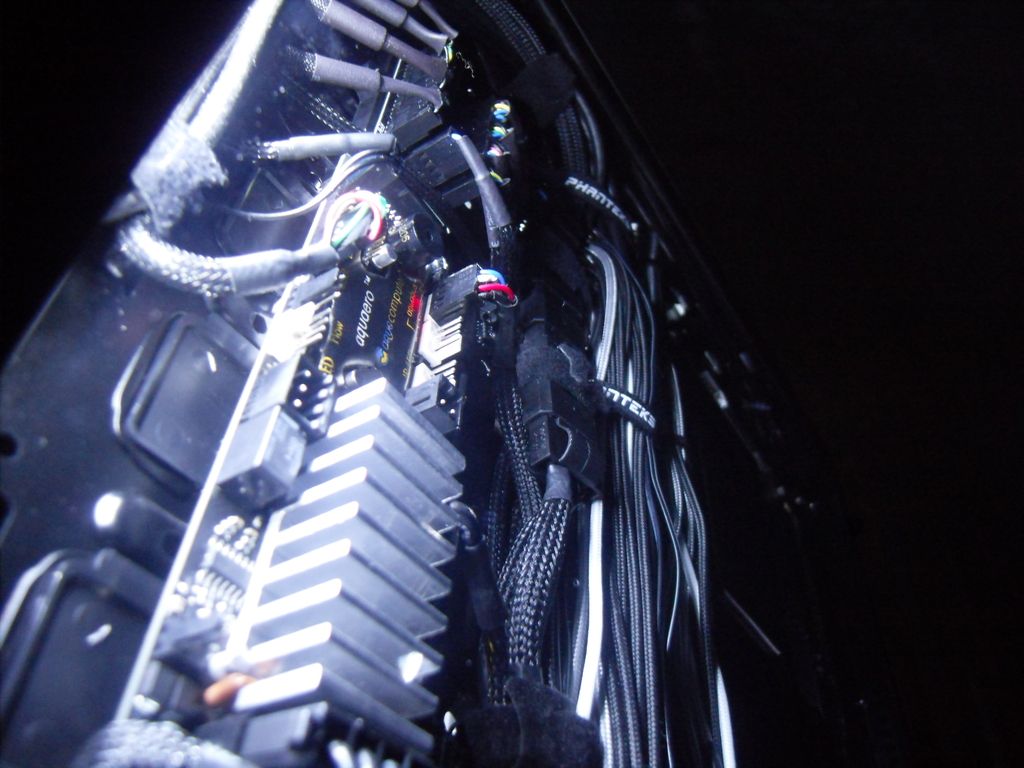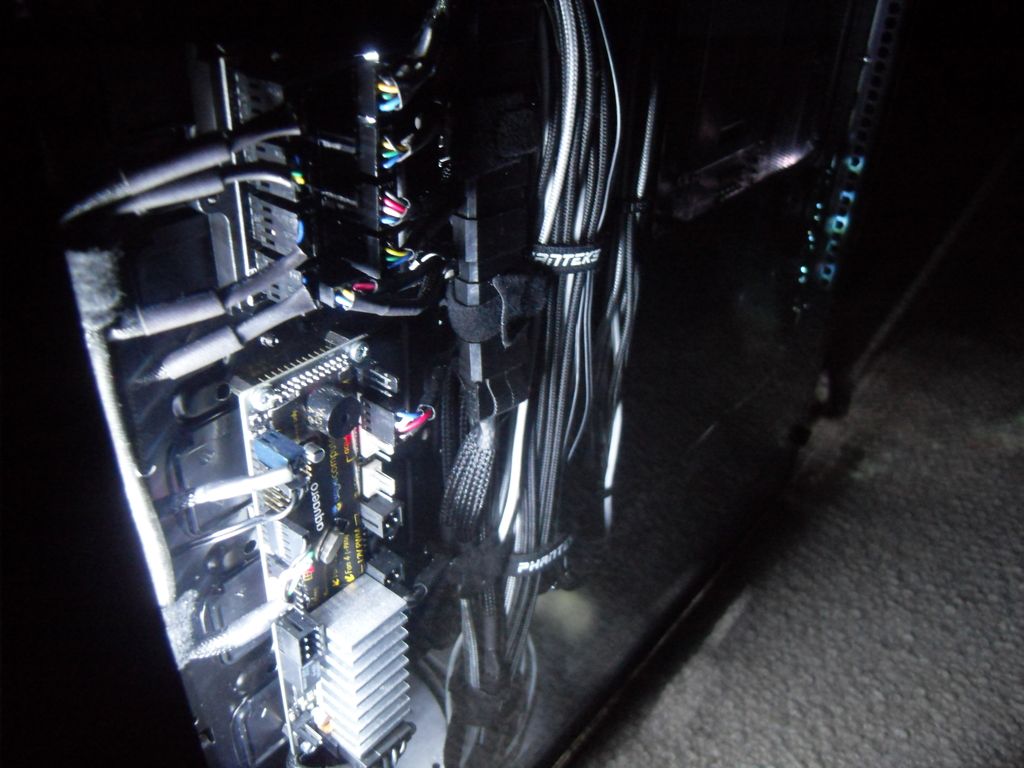Drain Port Installation
Normally in my builds I just run a T-fitting at the lowest point with a bit of extra hose and a ball valve at the end in order to drain the loop. It works extremely well and is pretty easy to do and use.
Unfortunately that wasn't really going to cut it for this build... I played with the idea of having a ball valve attached at some point in the loop, but no matter where it was, its large size made it look ridiculous.
So I came up with the not so original idea of fitting a fill port to the bottom of the case for very effective draining (with it being the very bottom of the case) and I had a perfect place for it. Excellent!

Then I realised fill ports were just pass through fittings that costed more and used an 1/8" fitting on the outside rather than a 1/4" so I went with a pass through instead

First up, marking where I need the hole to go:
This was my ingenious plan. Stick some pipe and a fitting onto the end of the run that you want to line up and when that doesn't reach the base of the case stick some electrical tape around it so you can accurately mark which you want the hole to be.
Then I punched a hole in the base to mark the centre of where I wanted the hole to be.
Now I am going to have to apologise here. I have no shots of the in progress hole cutting. I drew a 2 cm wide circle around the pilot hole I made to accommodate the pass through. Then all I did was cut as large a square out of the centre of the circle I could with my dremel and then used the cylindrical grind stone fitting in it to refine that into a circular hole of the correct size

After a quick filing to smooth the freshly ground hole, the pass through fitting fit very snug!
So, drain port successfully installed!
I do really like the way the drain port turned out, it has definitely added something to the build.
That is what the bottom right of the PC is like (Bit of a tease for tomorrow when the full glamour shots come in

). The pump has soft tubing fitted to it to decouple it from the case, stopping it's vibrations from making additional noise. Who likes what I did with the silver kill coil in the soft tubing? I might get another for the other bit of tubing


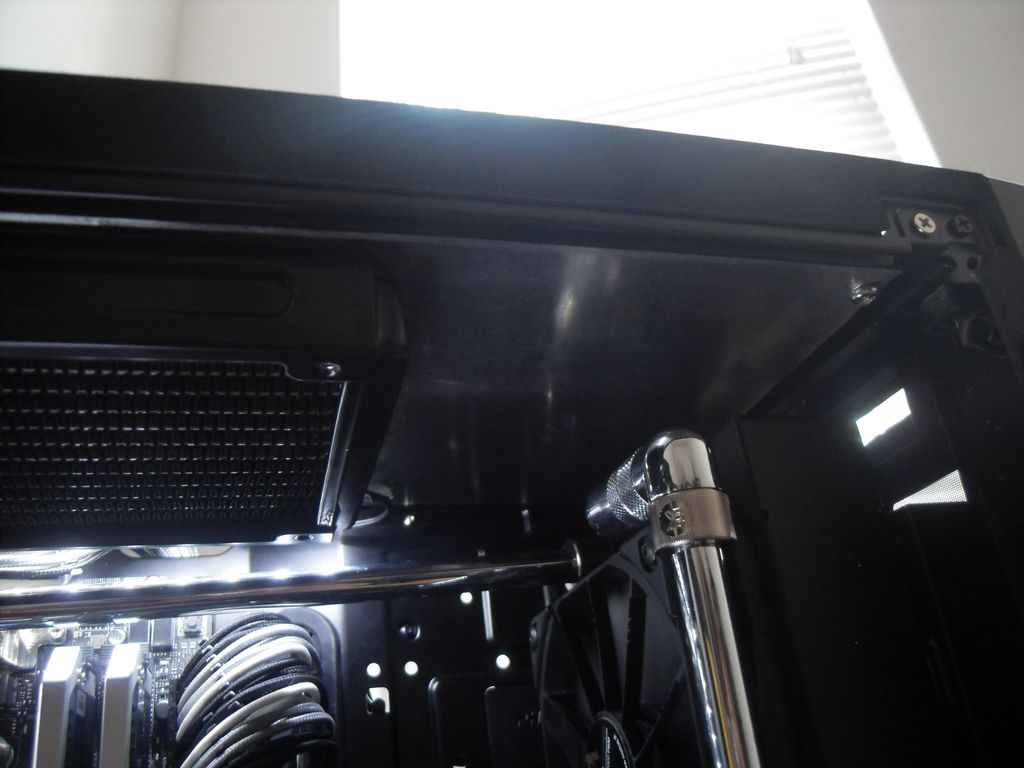





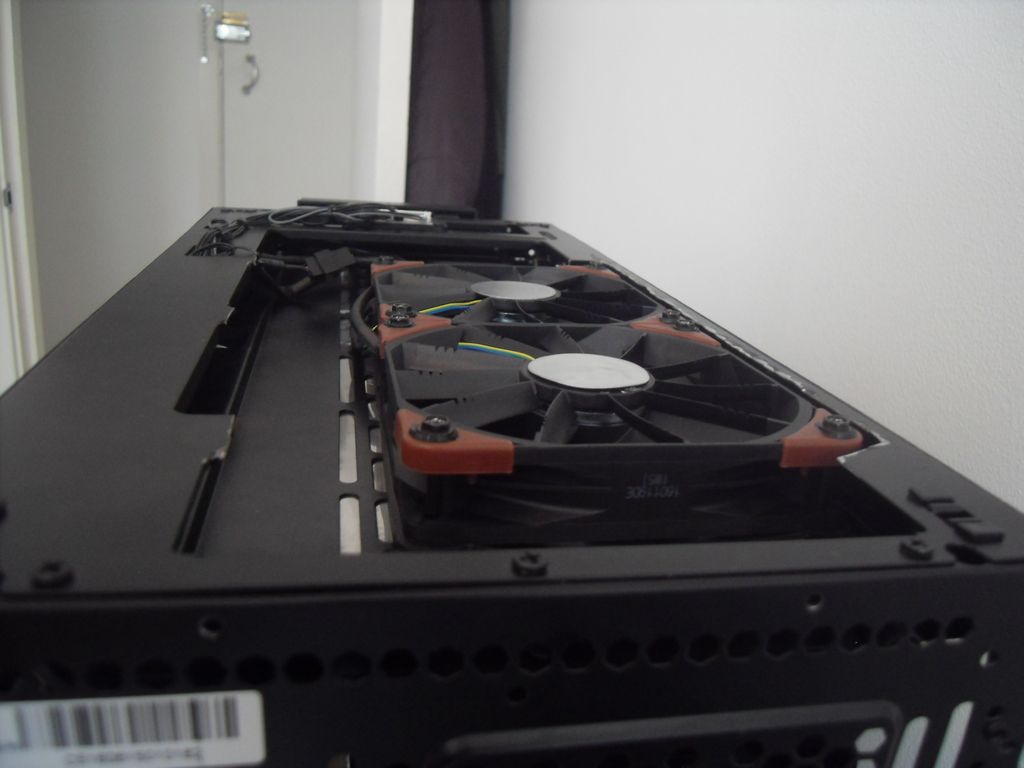
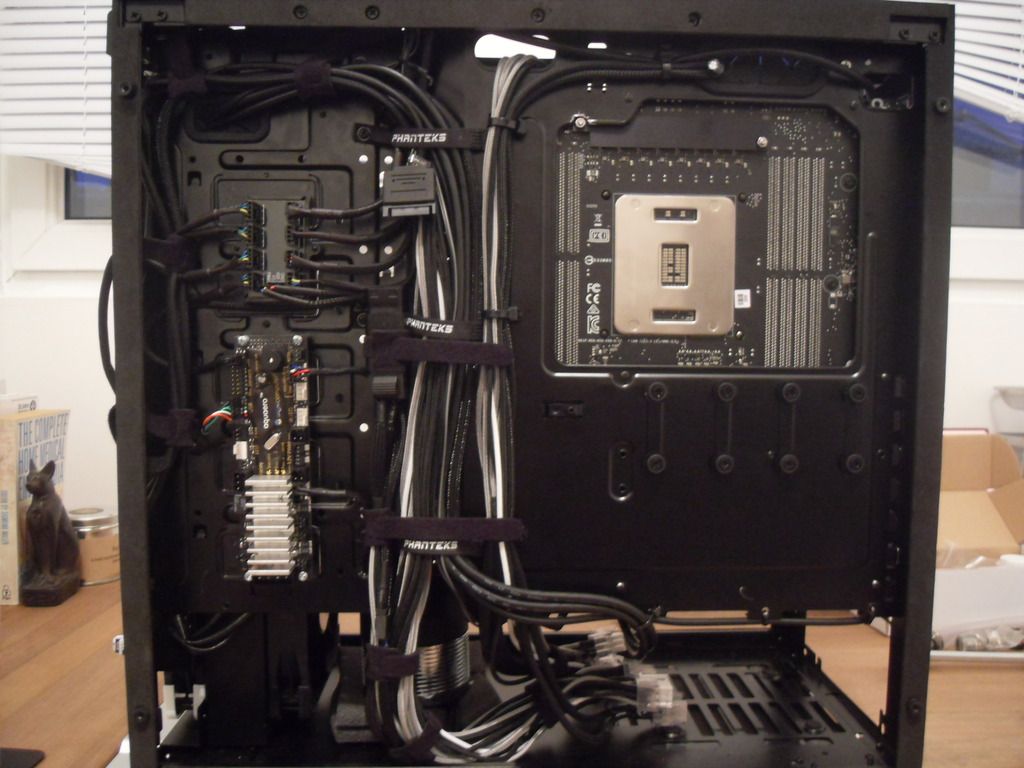
 I'm surprised there's enough space to let the air in/out between your fans and the roof though - unless they've changed things between the ATX and the ATX Glass edition.
I'm surprised there's enough space to let the air in/out between your fans and the roof though - unless they've changed things between the ATX and the ATX Glass edition.

